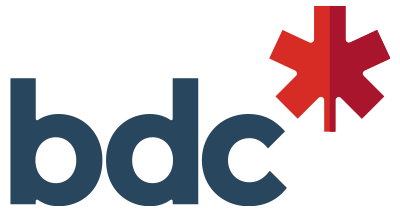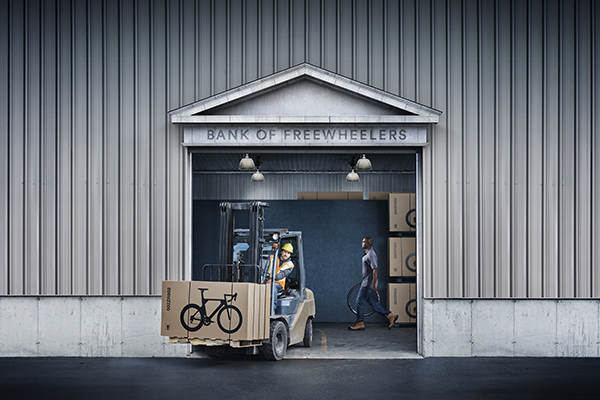Buying Industrial Equipment: Financing Options
By Shajitha Rajavickneswaran | February 13, 2017
Presented by BDC

Buying industrial equipment is a significant investment. The right equipment can help your business in many different ways, from enabling you to introduce new products and services to streamlining production processes you already have in place.
There are two main financing options available when you purchase industrial equipment: you can buy or lease. This article will help you navigate the process of buying industrial equipment.
Getting Ready
When applying for a loan, expect the lender to evaluate your application based on your company's ability to service the loan as well as their ability to liquidate the equipment if the company runs into financial difficulties.
Amount of financing requested. This is often the first question asked by the lender. Depending on the amount, the payback term, interest rates, and additional fees may differ. When presenting the amount, it’s important to know the breakdown of your costs. I.e. how much will the costs of the equipment, installation, delivery, and training add up to?
Personal and business credit scores are often looked at to assess a borrower’s ability to repay a loan. Personal credit scores range from 300 to 850, where the higher the score, the more reliable a borrower is perceived. Lower scored borrowers can also be approved for a loan, although their interest rates may be higher to protect the risk taken by the lender.
A business plan is often required to assess the feasibility of a borrower’s plan. It includes a wide range of fields such as the financial projections, ratios, customer demographic, marketing plan, and the ownership of the business. Through evaluating these areas, the borrower assesses the likelihood of the company succeeding, and will choose to approve or reject the loan.
A business’s financial statements including the profit and loss statement, balance sheet, cashflow projections and your current accounts receivables and accounts payables allow the lender to evaluate different aspects of a company. This includes their amount of revenue, debt, and profitability.
Government filings such as your recent corporate notice of assessment, source deductions filing and HST return may be required.
Collateral is a protective measure to ensure the lender gets paid back if the borrower can no longer afford to make payments. Often the equipment you are buying can be used as collaterals. Other options may include vehicles, homes, and equipment that has a title of ownership.
Preferred repayment terms are not necessarily an expectation, but with institutions offering flexible repayment option, it’s a good idea to have an understanding of what your company can afford to pay back and when. Many financing options include the choice of a fixed payment amount or seasonal payments.
Financial Ratios
The following ratios help institutions understand the reality of your company, and may be required from you in order to gain approval on your loan request.
Current Ratio (CR)
What it tells the bank: The borrower’s ability to pay off short-term liabilities
Ideal range: 1:1 and no more than 2:1
The calculation: CR = Current Assets / Current Liabilities
Example: Michael owns an Italian restaurant with his current assets valued at $850,000. His current liabilities total to $650,000.
CR Calculation: $850,000 / $650,000 = 1.31
Debt-to-Equity Ratio (DER)
What it tells the bank: A company’s debt compared to their invested amount
Ideal range: No more than 2, although dependant on the industry
The calculation: DER = Total Liabilities / Shareholder’s Equity
Example: On the quarterly report for Lisa’s construction company, her total liabilities were valued at $2,500,750 while the Shareholder’s Equity totalled to $980,000.
QR Calculation: $2,500,750 / $980,000 = 2.55 -> For a construction firm, above 2 is classified as an acceptable ratio.
Financing Options
Numerous financing options are available to assist companies in paying for large expenses such as equipment. By going through the following options, you will get a better understanding of the benefits and drawback each option has to offer.
Business Development Bank of Canada
The Business Development Bank of Canada (BDC) is an organization formed by the government. It was created to help support small and medium sized business by offering financing options, advisory services, and capital.
The BDC offers entrepreneurs financing on equipment for purchases including line machinery and equipment, commercial vehicles, and specialized technology.
To make the loan more affordable, the BDC offers benefits such as:
-
The loan can cover the purchase cost, shipping, installation, and training
-
Repayment:
-
Can last up to 12 years
-
The first payment can be can be postponed for up to 24 months
-
Match repayments to cash flow cycle
-
Can make payments at any time without penalties (for loans with floating interest rates)
-
-
Collateral does not consist of personal assets
Canada Small Business Financing Program
The Canada Small Business Financing Program (CSBFP) is available for start-ups and for profit companies. If gross annual revenues are less than $10 million, business types including corporations, sole proprietors, partnerships and cooperatives are eligible for the program.
To apply for the financing opportunity, business can go to a bank, credit union, or other financial institutions with their business plan. With the borrower, they can then negotiate a loan for up to $1 million, although funds for equipment can only total to $350,000.
Costs associated with this loan include the 2% registration fee, a variable or fixed interest rate, and a lender fee depending on the institution.
Regional Development Agencies and Associated Non-Profit Organizations
There are six major regional development agencies in Canada that have federal funding and a mandate to address economic issues by offering regionally tailored programs:
-
Western Diversification(WD) services British Columbia, Alberta, Saskatchewan and Manitoba
-
Canadian Northern Economic Development Agency (CanNor) services Yukon, Northwest Territories, and Nunavut
-
Federal Economic Development Initiative for Northern Ontario(FedNor) services Northern Ontario
-
Federal Economic Development Agency for Southern Ontario (FedDev Ontario) services Southern Ontario
-
Canada Economic Development for Quebec Regions (CED) services Quebec
-
Atlantic Canada Opportunities Agency (ACOA) services New Brunswick, Nova Scotia, Newfoundland and Labrador, and Prince Edward Island
Programs offered vary within each region and funding may flow through to a related non-profit organization, such as the Community Futures Development Corporations (CFDCs). Many regions offer targeted loan programs, such as FedNor's support for manufacturers program that offers financing for companies seeking improvements.
Due to the wide variety of programs offered and variation over time, we cannot list them all here. Your local minister of parliament (MP) can help you identify the agencies operating in your area.
Traditional Institutions: Loans
From the RBC Equipment Purchase Line to the CIBC Small Business Loan, Canada’s traditional banks offer various methods to help businesses finance industrial equipment.
Benefits of using traditional banks include:
-
Flexible repayment options:
-
Seasonal payment methods where payback terms can be matched to your high performing periods
-
Interest rates can be fixed-rate or variable
-
On average, companies can have up to 15 years or more to payback depending on the institution’s terms
-
-
Loan amounts can include costs of the asset, delivery, installation, and training
-
Loan decisions are made quickly, where response times can take as little as a day
Areas to keep in mind with traditional banks is setup and review fees. These may occur depending on the institutions and amount requested.
Lending Companies
Taking out a loan from a private company is often a choice when the bank rejects the request. Private lenders may look at collateral and require a certain credit score, but they also take into consideration the owner, their ideas, years of operation, and their annual revenue.
Lending companies also strive for a quick acceptance process, therefore depending on the lender and the amount, it can take between hours to days to approve the loan.
The repayment process is also flexible, and ranges from options including no fixed payments to pay back amounts based on a percentage of sales. The only drawbacks of this option includes higher interest rates and lower limits.









